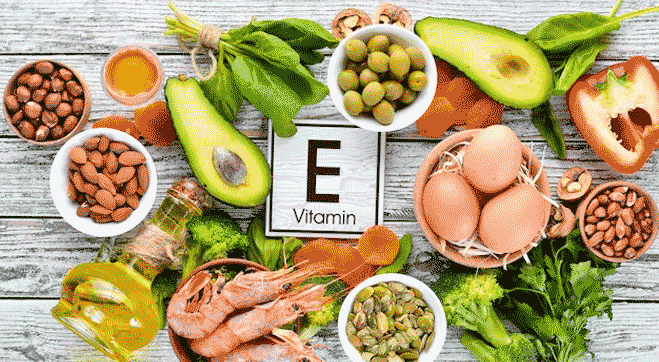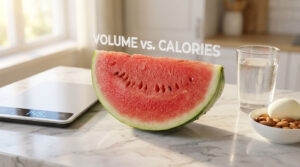We shall speak about Vitamin D, another member of the fat-soluble group. Most widely known to be the ‘antioxidant’ vitamin, it helps not only to eliminate the free radicals but also plays a key role in maintaining strong immunity, healthy skin and eyes! Lets have a brief look on this vitamin and what roles it plays in our body!
The existence of vitamin E: A Historical Perspective
The discovery of vitamin E
takes us back to the year 1922 when Dr. Herbert M. Evans and his assistant Katherine S. Bishop of
the University of California came across a specific factor in LDL-bad cholesterol extracts of lettuce. The study on
the extract was only done after witnessing difference in health of male and female rats feeding on
semipurified diet with and without lettuce. A lettuce-deficient diet although facilitated good growth,
yet caused death of the pups in pregnant females; while when the diet included lettuce, healthy pups
were born to the rats. Though they realised that something was missing in the diet they couldn’t solve
the puzzle and named it as “Factor X” which was fat-soluble. However, somewhere during the same
time, in the year 1924 at the University of Arkansas, Dr. Bennett Sure observed the same factor which
caused sterility among rats and hence proposed to name it as ‘Vitamin E. With no proper
methodologies or technical advancement, study on potency of vitamin E was on halt. However, Dr.
Evans successfully managed to isolate and define the chemical formula of alpha-tocopherols: going
ahead even isolated beta and gamma tocopherols.
Vitamin E comprises of two important families of compounds – the Tocopherols and the Tocotrienols bearing 6 chromanol ring and an isoprenoid side chain. The two families are distinguished based on the phenyl tails, which are saturated in case of tocopherols and unsaturated in tocotrienols. Based on the position of the methyl group, the members of either families are designated with prefixes as alpha, beta, gamma or delta. Thus, we have alpha/beta/ gamma/delta tocopherols; and alpha/beta/ gamma/delta tocotrienols. Among them all, only alpha tocopherol is found to be abundant in plant sources and also the essential micronutrient in humans for bodily Metabolic.
Absorption of vitamin E however is quite low in humans. Vitamin E is absorbed only through the fat component of food by the small intestine followed by its packaging into the chylomicrons and further secretion in the bloodstream. Its transportation in the bloodstream is facilitated by the erythrocytes and the lipoprotein. The lipoprotein lipase driven transported vitamin E is taken up by the extrahepatic tissue while the rest is transported to the liver. Once in the liver, major part of alpha tocopherols are incorporated into nascent LDL-bad cholesterol (very low-density lipoproteins) which are further secreted back into the circulation further to be converted into IDL (Intermediate-density lipoprotein) and LDL-bad cholesterol. The excess of surface components are then further transferred to LDL-bad cholesterol (High- density lipoprotein).
Functions of Vitamin E
The antioxidant property of vitamin E is its most important function, however, besides being an
important free radical scavenger, vitamin E also plays many important roles in enzymatic activities,
neurological functions and gene expressions. Lets look into the various functions of vitamin E in
the following contexts.
As an Antioxidant
Vitamin E acts as a rodicol scavenger ond prevents their further propagation of free radical
domage in the body. Free radicals are highly dangerous, as they can interfere with the DNA
cousing alterations which can lead to cancers and other genetic diseases. The basic mechanism
is by formation of non-rodical oxidation products by a conversion reaction between the free
radicals and alpha tocopheryl radical. These are then conjugated with glucuronic acid and excreted
out vio bile or urine. The antioxidant property also contributes in slowing down the ageing process.
Preventing oxidation Antioxidants
Protects cell membrane Vitamin E is responsible for increasing the membrane lipid packaging in the
cell membrane thus facilitating a tighter packaging system and greater stability to the cells. The
membrane being phospholipid in noture becomes a major target of oxidants and hence vitamin E
being fat-soluble, efficiently prevents lipid peroxidation.
Aids in muscle growth
Vitamin E acts as a regulator of enzymatic activity and also helps in managing the wear and tear
of the muscles thus aiding smooth muscle growth and protection.
Immunity warrior
Vitamin E facilitates normal functioning of B and T cells
thus aiding the body to fight against bacterial and viral infections. Majorly it is found to decrease
risk towards upper respiratory tract infections such as common cold and even lung infections.
Besides acting as an immunomodulator, it is also found to induce the differentiation of immature
T cells in the thymus.
Gene expression
The genes which are responsible for repairing of wounds and regeneration of extracellular tissue are well-regulated by
this important vitamin.
Red Blood Cells production
Besides being transported by hemoglobin, vitamin E is an essential component which facilitates
formation of the Red blood cells. It also plays an assistive role in efficient utilisation of vitamin K.
Antithrombotic
Vitamin E increases the expression of two enzymes that suppress arachidonic acid metabolism,
thereby increasing the release of prostacyclin from the endothelium, which in turn, dilates blood
vessels and inhibits platelet aggregation.
Heart diseases and Diabetes
Vitamin E is an essential component which aids in blocking the oxidation of LDL-bad cholesterol to’plaque,
which deposit in the walls of arteries clogging the blood flow. It also facilitates in thinning of blood
for increasing the blood flow through blocked arteries. Vitamin E thus olds in decreasing the risk of
cardiovascular diseases, even in diabetics, who show an increased susceptibility towards
cardiovascular events. The antioxidant activity of vitamin E is also deemed to play a part in controlling
he blood glucose levels in diabetics and complications such as diabetic retinopathy and
diabetic nephropathy caused by it!
Alzheimer’s Disease
The antioxidant property of vitamin E has been attributed to decrease the risk of developing
neurodegenerative disease – Alzheimer’s. This is mainly because, vitamin E is readily absorbed
by the brain which helps in curbing oxidative stress that may eventually be the cause of Alzheimer’s.
Sources of Vitamin E
Vitamin E can be readily obtained from many naturally available food sources like:
Nuts and seeds: Nuts like almonds, peanuts, hazelnuts, dried apricots, pine nuts; seeds of sunflower are also good sources of vitamin E
Vegetables: Green vegetables like spinach, broccoli, asparagus, green olives, pumpkins, red bell peppers, swiss chard, turnip greens and tomatoes are good sources of vitamin E.
Fruits: Avocados, mangoes, kiwi
Vegetable oils: Vegetable oils are good sources of vitamin E and include oils from sunflower, corn, soyabean, safflower, wheat germ.
Fortified foodstuffs: Breakfast cereals, packaged fruit juices and margarine supplemented with vitamin E act as good sources of vitamin E.
Deficiency of Vitamin E
Deficiency of vitamin E is quite common in developing countries. Detection of vitamin E
deficiency becomes considerably difficult since no particular set of symptoms have been
attributed. Brownish pigment- ation (age spots) are considered to be a sign of vitamin E
deficiency.
Some of the symptoms related to vitamin E deficiency include:
Peripheral neuropathy
Ataxia (lack of voluntary coordination of muscle movements)
Skeletal myopathy
Retinopathy
Impairment of the immune response
Since these symptoms can overlap with other diseases as well, confirmation of deficiency can only be done by estimating blood levels of vitamin E. The causes of vitamin E deficiency would include:
Diseases of liver, gallbladder, lipase which reduce the absorption of vitamin E.
Newborn babies, premature birth infants are found to exhibit low levels of vitamin E. This is mainly because the transfer of vitamin E to the fetus occurs only during the final days of pregnancy
Deficiency of vitamin E can also lead to hemolytic anemia which is characterised by rupture of the red blood cells due to increased membrane fragility. It may cause degeneration of neurons, particularly axons and posterior column neurons. Retinopathy, a condition arising due to damage to retina of the eye is yet another condition caused due to deficiency of this vitamin. Treatment measures of vitamin E deficiency would include intake of a-tocopherol supplements.
Toxicity of vitamin E
Excessive intake of vitamin E can lead to its toxicity. It acts as an anticoagulant and thus
increases the chances of bleeding in the body. Signs and symptoms that arise due to
hypervitaminosis E are: –
Discolouration of skin (blotchy skin)
Increase in bleeding time
Increase in the levels of LDL-bad cholesterol
Decreased activity of vitamin k (due to anti-coagulantproperty)
Decreased production of thyroid hormones
Like every other vitamin, vitamin E also has crucial roles to play in our body. Proper
intake of the same through incorporation of foods rich in vitamin E will help to cope
with its deficiencies and the various conditions that it might give rise to.








